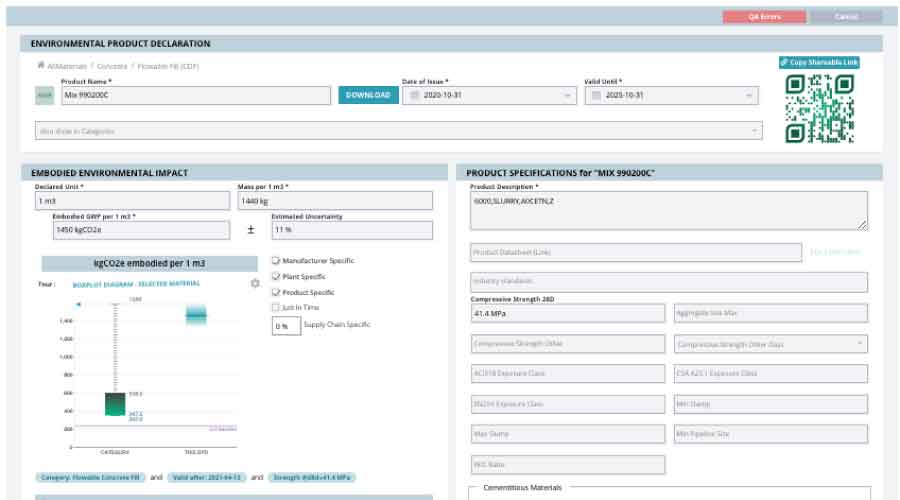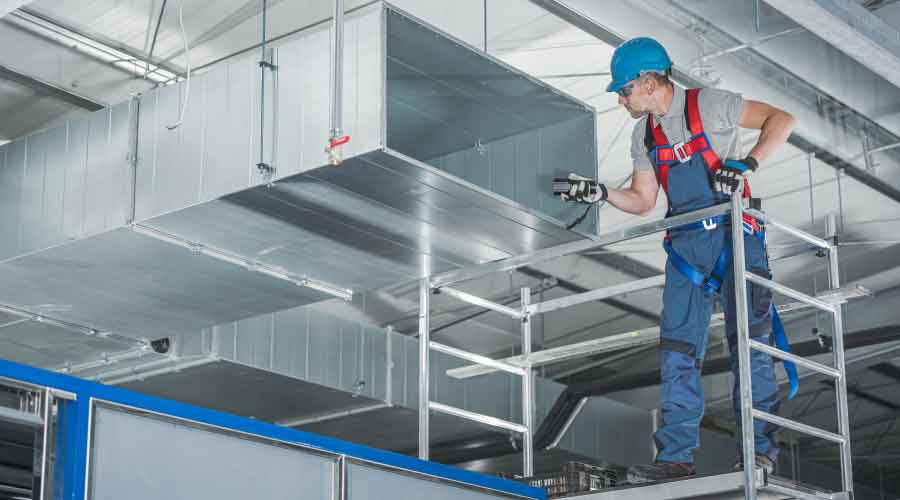
Software Created to Help Managers Track Carbon-Cutting Materials
Building Transparency organization creates tool designed to help managers compare, contrast EPDs in products. August 22, 2022
By Dave Lubach, Managing Editor
Whether it’s cutting carbs to lose weight or cutting carbon emissions to flight climate change, it’s always beneficial to have a little help.
People cutting carbs always look at food labels to find the contents of the ingredients or plug a product/item into an app to find the answer. But now, thanks to new software, facility managers can take a deeper dive into the products needed to help achieve their net-zero goals.
Building Transparency, a non-profit organization that offers software allowing users to access data and tools to help them achieve net-zero goals. The organization developed the Embodied Carbon in Construction Calendar (EC3) that helps building owners and facility managers compare the carbon inclusions of the products they intend to specify for their buildings.
One of the co-designers of the EC3 app, Building Transparency Executive Director Stacy Smedley, compares the goal of the software to watching carbs by looking at the labels on food. Instead, managers can use the tool to compare ingredients in products such as concrete and carpeting, among many other options through the software that reveals the product ingredients on environmental product declarations (EPDs).
“If I want a low-carb diet, I go to the grocery store, go to the cereal aisle, and I’ve got three boxes of granola, I can find that carbohydrate serving per size, and figure out which one is the lower carb,” she says. “So with EPDs, you can see their typically published PDF documents, and there’s a table that looks very similar to that nutrition label. That will tell you there’s this much carbon kilograms of CO2 per declared unit of material.”
Smedley was the sustainability director for Skanska, a global general contractor, when she co-developed the EC3 tool. She was helping the company achieve its goal of achieving carbon-zero targets and searching for data to help the company achieve its goals and was doing it the old-fashioned way, “Googling the product, going to the manufacturer website, click on their environmental data, find the EPD, download the document and find the information and put it onto a spreadsheet and do it again and again. … It just wasn’t efficient,” she described.
Smedley’s idea was to find a way to digitize the product data into a database that users could go into very quickly and sort information by supplier, ingredient values, etc., and make comparison.
Skanska realized the EC3 tool was a great benefit to helping fight climate change when Microsoft used it to help with building a campus building. The tool was eventually launched in 2019 with the financial backing of such companies as Microsoft, Google and Amazon under the Building Transparency organization, which Smedley now heads.
The financial support of such tech-minded companies enabled the creation of Building Transparency, which took on Smedley into her current role, and remained a non-profit as the EC3 tool remains a free service for users, which includes facility managers and manufacturers to compare products.
Since launching in 2019, EC3 has grown to include 25,000 users from more than 70 countries and contains more than 80,000 global product EPDs across many material categories. In markets where EPD data exists, the organization reports 30 percent or more reductions in carbon emissions by using the tool to select and procure low-carbon materials.
The success of the first three years of operation tells Smedley the future is encouraging both for the tool and companies’ approach to reducing carbon emissions.
“Everything is growing in terms of the number of EPDs and the number of projects and users,” Smedley says. “I also just think the number of companies that are engaging now in embodied carbon accounting is growing. There’s also public policy that’s happening. So the fact that we’re having the private sector and the public policy groups looking at (EC3) at the same time, is also unique.
“There’s a lot going on at the federal level, with the $5.5 billion Inflation Reduction Act and low-carbon procurement pilot inspection projects. It’s just amazing the trajectory that we’re currently on around this.”
Dave Lubach is managing editor, Facility Market.
Next
Read next on FacilitiesNet












